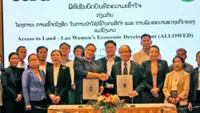The 2024 European Capitals of Culture
The title “European Capital of Culture” is about casting the old in a new light. Intended to showcase a cross-section of the European Union’s diverse cultures, it puts a spotlight on places that are normally outshone by bigger metropolises.
In this respect, the title, which is awarded by the EU on a regular basis, makes the cities interesting even after the cultural year is over. To date, around 70 cities have received the designation, with Athens, Greece being the first title-holder in 1985.
This year, the three cities are more like towns: Tartu in Estonia, Bodo in Norway and the Bad Ischl Salzkammergut region in Austria.
“Culture is the new salt” is the slogan of the old salt mining region for the Capital of Culture period, with the year set to deliver over 500 cultural events. Spread across 23 municipalities, the festivities are not taking place in one single “capital”. The nearby tourist magnet of Hallstatt, which is already visited by thousands of visitors a day, doesn’t need a publicity boost.
But in many places, initiatives have emerged that add something to a trip through the region around Bad Ischl, which is characterised by mountains, lakes and idyllic villages.
Local chef Christoph Held is the coach for the Tavern Lab project, in which the abandoned train station restaurant in Bad Ischl is being brought back to life by students from the local tourism school. “We are aiming to be open for at least 40 days this year, plus a similar number of days with pop-up restaurants,” explains Held. According to the 39-year-old Held, the aim is to set an example against the decline of pubs and taverns in rural areas and to demonstrate what young people can achieve in times of a shortage of skilled labour.
The spa town of Bad Ischl is used to the limelight. The town’s Kaiservilla preserves the memories of Franz Joseph and Empress Sisi and Viennese high society once gathered in hotels and coffee houses. The main exhibition Art With Salt And Water, which features sculptures, installations and video art, is on display at the former brewhouse. Curator Gottfried Hattinger has compiled works by artists from 12 countries.
Between April and November, the ceramics city of Gmunden will be showing three top-class ceramic art exhibitions in the new Stadtgarten arts quarter. Eva Fürtbauer, the city’s project manager for ceramics is hoping for a range of impulses.
“It would be nice to have a place for young talent to go to and a meeting point for artists beyond 2024.”
They also want to boost culture-oriented tourism: “A cultural tourist is a good tourist.”
Tartu will probably never emerge from the shadow of the Estonian capital Tallinn, but it’s now at least bringing more international attention to the southern part of the Baltic country. The area around the city has been incorporated into the Capital of Culture celebrations, which include over a thousand events.
”We are the gateway to the south, which covers a quarter of Estonia, where a unique culture remains alive to this day,” explains communications expert Kaidi-Lisa Kivisalu, citing five local languages as an example.
Tartu itself is home to the oldest university in the Baltics. The dynamic university city of 100,000 inhabitants is famous for both its historic old town and its numerous start-ups
According to Kivisalu, a million visitors are expected, with seven to 10% coming from abroad. The main theme is “Arts of Survival” and is linked to the “knowledge, skills and values that will help us lead a good life in the future,” according to the organisers.
That may sound rather vague, but there are definitely highlights planned throughout the year. These include an exhibition by the contemporary porcelain and textile artist Kris Lemsalu (until July 21) at the Tartu Art Museum and a concert by popstar Sting on June 10.
”The first European Capital of Culture north of the Arctic Circle” – this is how people are celebrating in Bodo, which is located in the Salten region in northern Norway and has a population of just 54,000.
The Vestfjorden leaves its mark on the area. The people of Bodo and the surrounding region are determined to make the most of this unique opportunity to present themselves to the world.
Marketing director Helge Gronmo is promising: “The real superstar of the programme is the wide variety. With over a thousand events to choose from, there’s something for everyone. And many of the events will be free.” It’s the biggest cultural happening to take place in Norway in over a decade, with events also planned for the surrounding area and further afield.
The Sami people and their traditions and folklore will play a part in the celebrations. The Sami New Year celebrations took place in the beginning of May, and this will be followed by “Sami Language Days” at the end of September, and a food market on Dec 7 and 8; the venue is the Sami Cultural Centre in Bodo. – dpa








